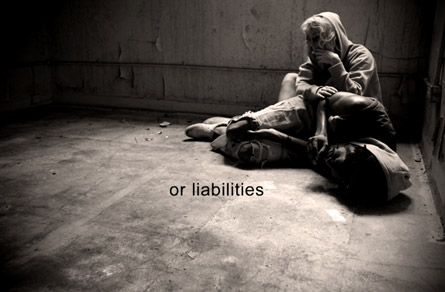 People who are less wealthy suddenly need a bigger policy to protect their families. People whose policy investments have been battered face unexpected premium increases. And even those who feel adequately insured at affordable prices are worried about their insurers’ ability to meet financial commitments.
People who are less wealthy suddenly need a bigger policy to protect their families. People whose policy investments have been battered face unexpected premium increases. And even those who feel adequately insured at affordable prices are worried about their insurers’ ability to meet financial commitments.In addition to investment losses, premium increases have shocked many people. “This is a real issue for clients who own variable policies,” said Loretta Nolan, president of Loretta Nolan Associates, a certified financial planner in Old Greenwich, Conn.
These policies combine insurance protection with a tax-deferred investment account that helps to pay the premiums. During the bull market, they promised investment returns high enough to limit the size and duration of premium payments. But the marketers didn’t stress the downside: if investment performance falls short, policyholders must spend more on premiums.
And that’s what has happened. Now, policyholders must pay higher premiums, for more years, to maintain their current level of insurance. The alternative is to reduce the coverage, which sometimes leads to a surrender charge.
If you’re in this situation, do a policy stress test, advised Ms. Nolan: ask the insurer to project your future premiums, assuming the policy investments earn a modest 4 percent return. If that shows you can’t afford the premiums, you need to consider alternatives.
If your priority is keeping your insurance, Ms. Nolan suggested replacing some of your variable coverage with a less-expensive term policy. For example, if you have a $500,000 variable policy, you might buy $300,000 of term insurance and trim your variable policy to $200,000, keeping your total premiums affordable. But if you see the variable policy chiefly as an investment loss — and don’t need the insurance — you might want to exchange it for an annuity, said Glenn Daily, a fee-only insurance consultant in Manhattan. The exchange is a tax-free transaction (called a 1035 exchange) that lets you use your loss to offset taxes on future gains. If you lost $30,000 in the variable policy, for example, your first $30,000 of gain in the annuity would be tax-free.
If your net worth has taken a 30 percent hit, advisers say you probably need more insurance to protect your family, at least until your stock portfolio and your home regain value.
Determining how much you need is more an art than a science, said Richard B. Freeman of Round Table Services, a Westport, Conn., wealth management firm. Instead of relying on a software program that would probably recommend more than you would ever buy, he suggested that you think in terms of two lump sums — one to pay off your mortgage and cover your children’s college education and the other to create income for your survivors.
A nonworking spouse needs insurance, too, added Mr. Freeman: “If Mom’s home with the kids, her policy has to do more than hire a nanny and a housekeeper. It should be big enough to let Dad take a job with shorter hours closer to home, so he can have more time with the kids if he’s the surviving parent.”
The cheapest way to increase your coverage is with term insurance, often available in a group plan through your employer. But that is not necessarily the cheapest way to buy it. If you’re healthy, you might get a better deal by shopping for an individual term policy, said Mark Cortazzo, senior partner at Macro Consulting Group, a Parsippany, N.J., financial adviser, especially if you’re a woman in a state with unisex rating for group insurance.
If you’re in poor health, you might want to buy as much group insurance as possible at work. You can usually convert it to an individual policy without evidence of insurability, albeit at a price, when you leave the job, Mr. Cortazzo said.
If you have serious health problems, you should avoid the standard application process for individual coverage because your application will probably be rejected after the medical exam. With each rejection it is harder to find coverage.
Instead, you should enlist a broker who specializes in the high-risk market to present your case informally to insurers. He can make sure you formally apply only to those companies that will accept you. You may soon have more options if insurers with highly publicized financial difficulties relax their underwriting standards to maintain their sales volume, said Wil Heupel, managing principal of Accredited Investors, a Minneapolis financial planning firm.
So how do you avoid buying insurance from a company whose health is worse than your own? Advisers say that if you’re buying more than $3 million in coverage it’s prudent to diversify among several highly rated companies.
“Work with a broker who sells the policies of many carriers,” Mr. Freeman said. An agent represents only one, whose problems he may minimize.
No comments:
Post a Comment